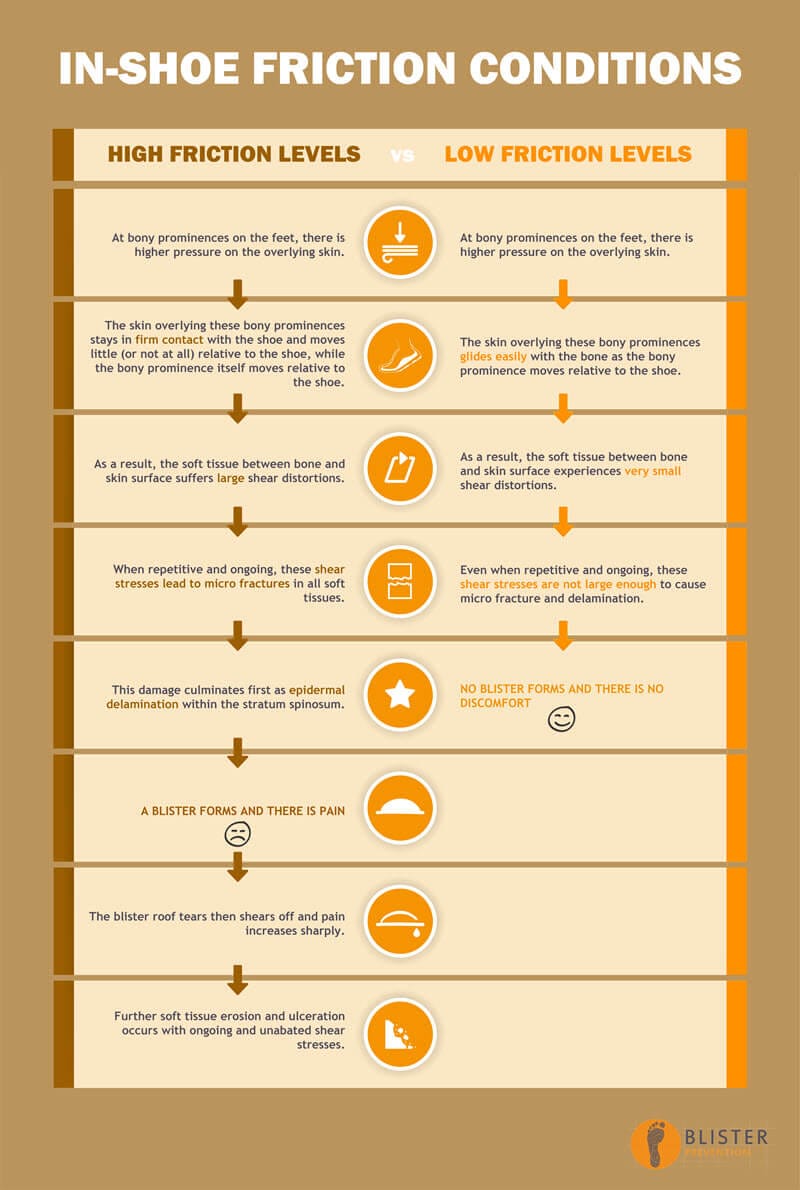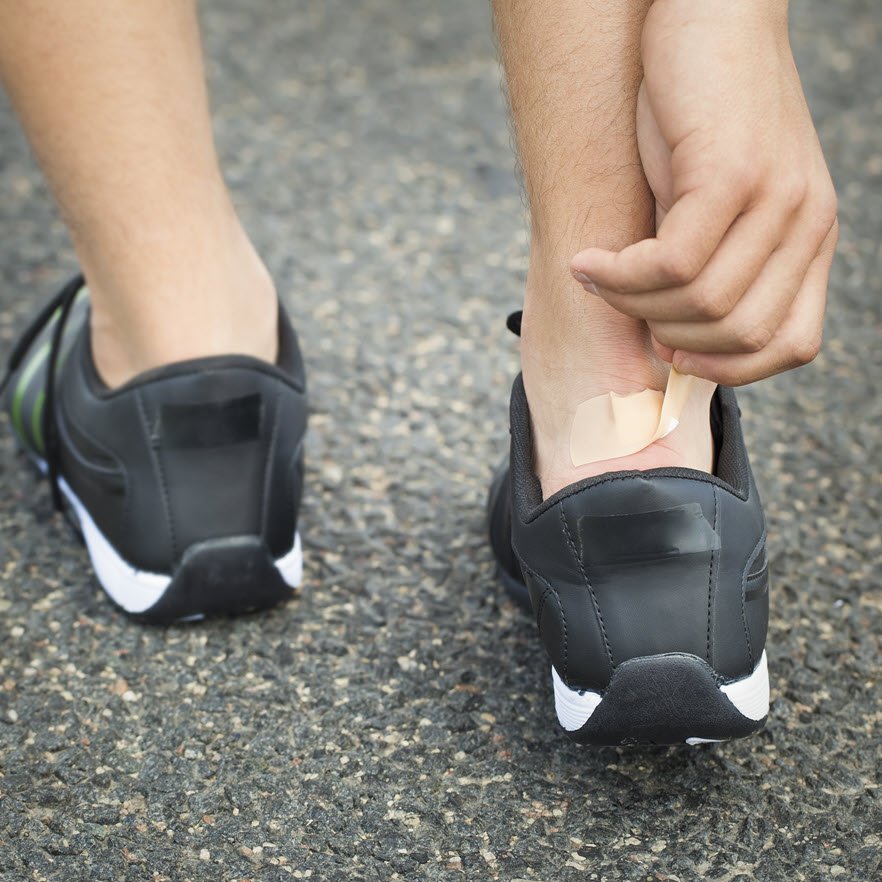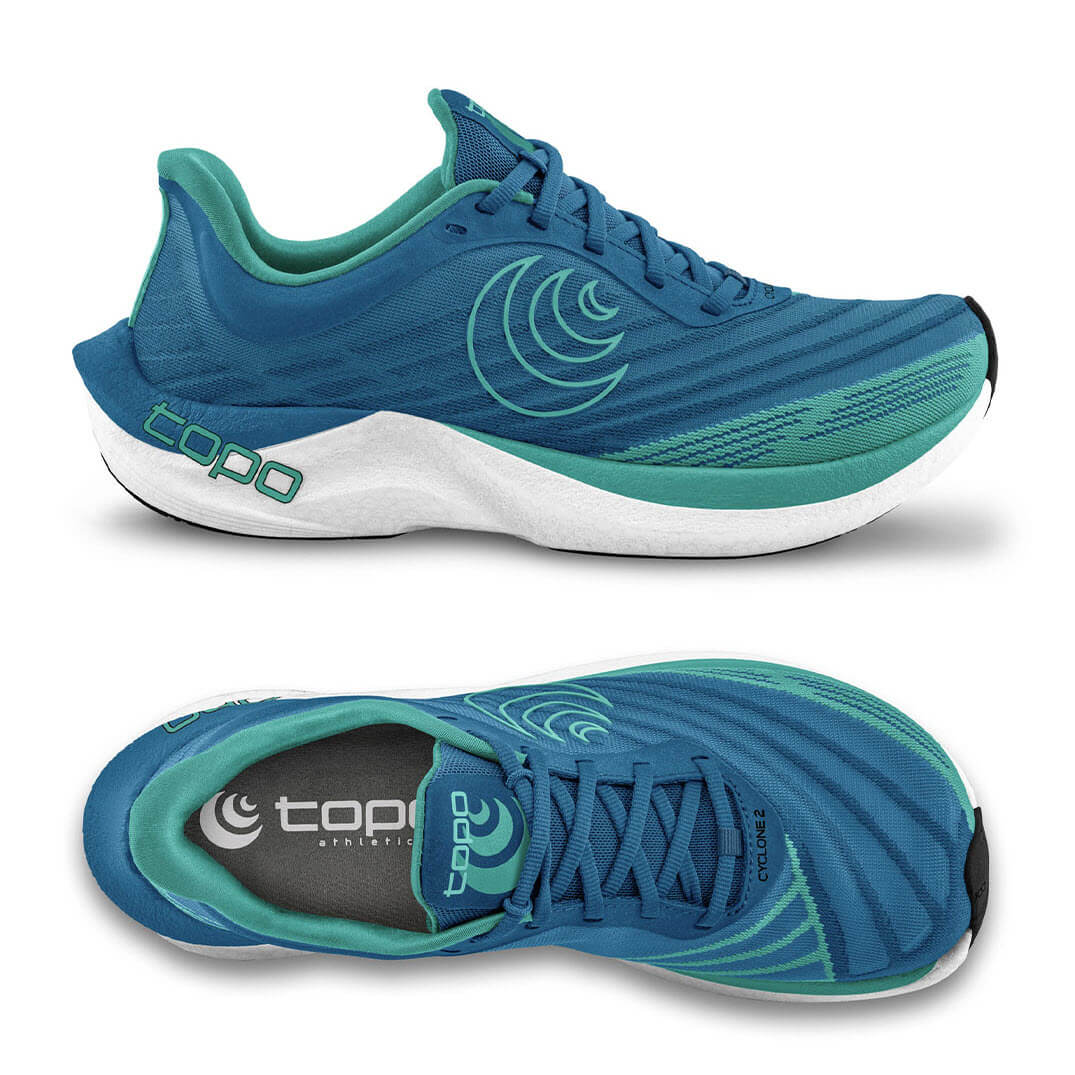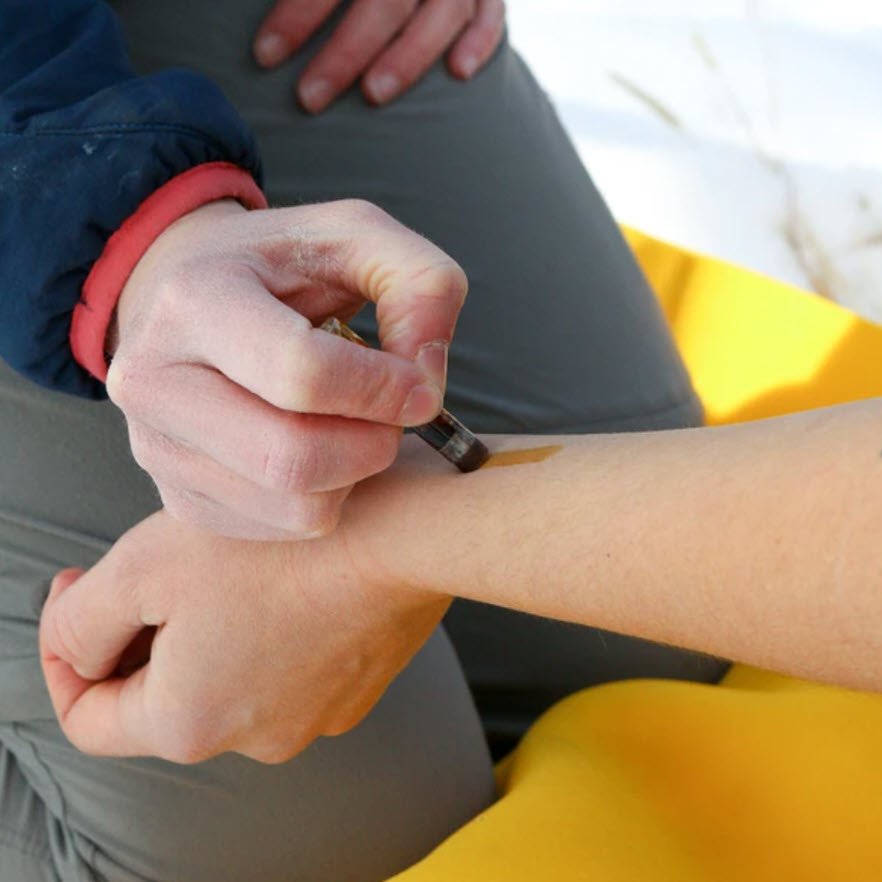There's something 99.8% of the population doesn't understand about friction blisters… friction! The result is, they don’t know how to prevent or treat friction blisters on their feet properly. Are you one of them? If so, your next friction blister on your foot needs you to know this!
Spoiler alert… friction is NOT rubbing!
Or is it? We’ll blame the English language for this! While many words in the English language have different meanings, by and large, we get by without too much trouble. But in the case of friction, its two definitions are not only different, they're opposite! We have not managed to negotiate this when it comes to the management foot friction blisters.
This conflict has clouded our understanding of what really causes this skin injury, resulting in us focussing on the wrong element when trying to prevent it and relieve it.
The 2 definitions of friction
There are two definitions of friction:
- The action of one surface rubbing against another (ie: rubbing)
- The force that resists the movement of one surface over another (ie: the force that resists/prevents rubbing)
In other words, it means both rubbing and the resistance to rubbing. Can you see the problem here? How can something resist/prevent the same thing? It can’t. Jumping doesn’t resist jumping. Clapping can’t resist clapping. Smiling can’t resist smiling!
Yet, using these two definitions, it is entirely accurate to say ‘friction (force) resists friction (rubbing)’. And this is where things get muddled up.
When thinking about, talking about and acting on friction blisters, only one definition of friction is relevant – the second one – friction force.
Things would be a lot easier if we got rid of the first definition (rubbing) and instead simply used the word ‘rubbing’ when that’s what we actually mean. And let the scientific definition come to the fore, letting friction mean what it should mean – the force that resists relative motion between 2 surfaces ie: how grippy or slippery it is.
Friction (force) resists rubbing – that’s a factually correct statement. One that helps explain the cause of blisters, and helps direct our focus on the right element for prevention.
What causes friction blisters on the feet?
Friction blisters are caused by repeated shear distortions within the skin and soft tissues of your foot. There are two fundamental elements that when combined, result in shear:
- Movement of bones in your foot
- In the presence of high friction force ie: grip
When the bones move in your foot, but the skin overlying those bones doesn’t, everything in between stretches and distorts to allow for the mismatch. This is shear. When repetitive, it can cause friction blisters. Let me break this down…
The bones move back and forth within our feet with every step we take. This is completely normal. But the skin doesn’t follow, at least not immediately, because friction force keeps it in stationary contact with the sock and the shoe. This is important and necessary for efficient gait. You’ll probably recognise this as traction or grip. Traction of your foot in your sock, your sock in your shoe, and your shoe on the ground is helpful. It means we can accelerate, decelerate, propel and change direction with efficiency. Traction comes from high friction (force).
It is completely normal for the bones to move and for the skin to not move with them. As a result, shear distortion within the soft tissues of the foot (including the skin layers) is completely normal and it happens with every single step we take. Our skin can put up with a lot of shear. But when it happens to excess (in magnitude and/or frequency), the connections between skin cells (under the skin surface) fracture and the skin cells die.
What is a friction blister?
A friction blister is the result of this repetitive shear deformation. When the connections between skin cells are stretched too far too often, they fatigue and break. The skin cells they are attached to die and an empty space is created. This starts to fill with fluid and over 2 hours, slowly causes the skin surface to bubble up to become what we recognise as a blister.
It's called a friction blister, not because of anything rubbing the skin, but because friction force keeps the skin surface in stationary contact with the sock/shoe/ground, while this bone movement occurs, repetitively. The higher the friction force, the less the skin surface is able to move in sync with the bone, and the higher the magnitude of the shear distortion of every step.
Friction isn’t always bad
Friction isn’t bad. In fact, friction is necessary. Friction provides traction. Friction only needs addressing when and where it’s an issue, like where you get a blister.
Friction Blister Prevention
There are many ways to purposefully reduce friction force to prevent friction blisters on the feet, even if you can’t reduce pressure. Let’s assume pressure remains unchanged… all of the following prevention strategies aim to reduce friction force and allow the skin to move in sync with the bone at an earlier moment with every step:
- Lubricants and powders reduce friction (force) to encourage rubbing
- Double-socks create low friction (force) between the sock layers to encourage rubbing at that interface
- Moisture-wicking socks aim to create a drier environment to reduce friction (force) and allow earlier rubbing
- All moisture-management strategies, including changing out of damp socks, for the same reason
- Engo Patches and PelliTec Pads are slippery and reduce friction force between the sock and shoe to allow rubbing at that defined area
Even where pressure is high, shear distortions need high friction levels to get anywhere near blister-causing. Here's how it works (image below). If you can reduce friction (force), you can prevent friction blisters on your feet.

(in-shoe friction conditions for friction blister formation on feet. In-shoe friction conditions for blister formation / blister prevention)
All of the above-mentioned strategies reduce friction force. Some do it better than others. In other words, some don’t get friction down low enough, for long enough. And so when friction inevitably rises, everything grips together again. And you’re back to square one. But one or two work brilliantly, keeping friction very low for very long. My favourites are Engo Patches, 2Toms BlisterShield Powder and Armaskin double-socks.
Friction Blister Treatment
If you miss the blister prevention boat, and you get a friction blister, you'll want to know how to treat your blister so it hurts less and heals faster.
A lot of people think all they need to do is put a plaster or bandage (ie: some sort of dressing) over their blister. An antiseptic and dressing is important first aid for your blister, and it will help protect the blister roof which has lost its structural support from underneath. But to make it hurt less and heal faster, you’ll need to implement the “prevention” you ideally would have had in place. The prevention is what nullifies the blister-causing forces (shear). Without this, shear will continue to happen to your already injured skin. Yes, your blister will be clean and won’t get infected (thanks to your antiseptic and dressing), but it will still hurt and will likely worsen, because you haven’t stopped the blister-causing shear.
Remember, it’s not about rubbing. Rubbing doesn’t cause blisters. If you can encourage a small early glide over your dressing, that’s what will give you relief and allow your blister to start healing, even though you continue to walk or run on it. My product of choice for friction reduction during treatment is Engo Patches. That’s because they go on the shoe or insole and allow easy movement between the sock and shoe, just for that specific area, leaving traction unchanged elsewhere. If you try to allow that movement between your sock and your dressed blister, with lubricants for example, the lubricant often interferes with the adhesion of the dressing, making it come unstuck. So let your sock remain gripped to your blister dressing and get that relative motion (rubbing) at the other interface, the shoe-sock interface.
Again, excluding the influence of pressure, here are all your friction-reduction options. See how they’re the same as the prevention options – prevention is required during treatment!:
- Lubricants
- Powders
- Moisture-wicking socks
- All moisture-management strategies
- Double-socks
- Engo Patches
- PelliTec Pads
Most people don’t know to do this during blister treatment.Because they’re caught up with thinking friction is rubbing, and they’ve eliminated rubbing by applying their plaster or bandage.
How to know if my shoes are causing friction blisters
There are relatively high friction levels in your shoe. That's because of the materials selected by shoe manufacturers to line your shoe, plus your socks, plus the fact that the feet sweat a lot and there are limited opportunities for evaporation. All of this means your skin grips your sock; and your sock grips your shoe. They all grip together so your foot doesn’t slide around in there.
But your bones aren't stuck. They move around within your foot with every step you take. Now, considering the skin and bone are tethered to each other, indirectly via the tissue layers in between, as the bones move and your skin doesn't, everything between skin and bone stretches and distorts. These are the shear distortions that cause blisters.
There are other footwear factors that will contribute to the friction in shoe friction blisters. These are largely pressure-related. Pressure is a part of the friction equation. Basically, the more firm two surfaces are pressed together, the higher the friction force will be. This is why it is important to buy shoes that are the right size and shape for your feet.
- Shoes too small or narrow – If your shoes press on your foot because they are too small, friction force will be higher at this site. Areas of high compression are to be avoided as you will be predisposed to friction blisters in these areas.
- Shoes too big – In a similar way, if your shoes are too roomy, your foot slides forward and your toes occupy the narrower and shallower toe box area of your shoe. If this happens, the skin overlying these areas of your foot will be compressed. For the same reason, but the opposite scenario, shoes that are too big are just as bad as shoes that are too small.
- Shoes the wrong shape – If you have a bony deformity and your shoe does not accommodate that bunion, there will be a concentration of pressure. The higher the pressure at your bunion, the higher the friction force on the skin. So, it’s important to leave no stone unturned when it comes to selecting the right shoe for your foot shape. For bunions, you need a shoe that is sufficiently wide at the forefoot. This might not be easy to find, but it’s a necessary step. It’s not the only thing you can do, but the more accommodating of your foot shape, the easier it will be to add an additional layer of protection to get you over the line blister-free.
Friction Blister Healing Stages
Generally speaking, small friction blisters on the feet with an intact blister roof will heal enough to allow pain-free walking within a few days. The first stage of blister healing will see blister fluid reabsorbed and the roof will more or less adhere back down to the underlying layer of skin.
However, if the blister is large and there is a large amount of blister fluid within it, it may not reabsorb in its entirety, and the blister roof doesn’t adhere back down. As the weeks go by and the progressively deeper layers move to the surface, you’ll notice tiny bits of crystalised blister fluid which has hardened. These crystals painlessly flake away to reveal new skin underneath.
If your blister roof is torn, it’s a good idea to lay it back down over your raw blister base, if it’s still largely in place. But don’t be afraid to remove it entirely if there is dirt that you can’t get out from under the roof, or the roof is only hanging on by a thread. By deroofing a blister, you’re able to use a hydrocolloid blister plaster. This dressing absorbs wound fluids and helps accelerate healing by providing an optimal healing environment.
It takes around 6 weeks for the damaged level of skin to work its way to the surface before finally being shed as dead skin cells. Don’t believe me? Take a look at this photographic timeline of blister healing. You’ll have been pain-free for many weeks before this, but this is one thing most people don’t account for, and they think they are still getting blisters weeks later, when all that’s happening is the previous blister damage coming through.
Blister healing will be delayed if you don’t implement a prevention to minimise shear distortion in the injured skin. The prevention is key, even during blister treatment.
Conclusion
Think back to that last time you took some action in an attempt to prevent a blister on your foot. You applied some tape, dressing or a plaster, right? You know, to stop that friction (rubbing). But your blister was still painful and still got worse as the day went on.
Reducing friction was the right option, but not by the rubbing definition. What you really needed to do was reduce friction (force) so rubbing over that blistered area was easier to come by. You needed to look for ways to encourage slippage between your blister dressing and sock, or between your sock and shoe. This is what minimises the magnitude of shear distortions to the skin under your dressing.
We know rubbing doesn't cause friction blisters! Indeed, encouraging early relative movement (rubbing) is how the majority of prevention products work.
Figure out which of these friction-cutting strategies is right for you - right for your feet, your shoes, your activity and your lifestyle. And have it handy for when you next get a blister. You’ll thank me!








